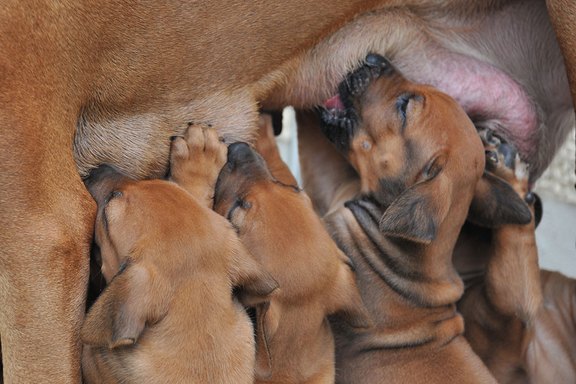Breeding with carriers

Genetic testing in dog breeding - it is becoming more and more extensive and unfortunately also more and more confusing for breeders. JME, DM, Dilute Factor, EOAD, hemophilia...these are all buzzwords that are thrown at us.
How to deal sensibly with the results of genetic tests is the difficulty and the great challenge of our time.
As far as genetic testing in general is concerned, we are still at the very beginning with our breed. Over the next few years, a large number of new tests will certainly be developed and we must learn to deal with these results sensibly and not "throw the baby out with the bathwater", as the saying goes.
Usualy all you hear from breeders is "I'll only use a stud dog that is clear in all genetic tests..." or "I'm not going to get it from a carrier....". However, we shouldn't see things quite so black and white, because it's not that simple - even if it seems that way at first.
Our gene pool will be massively restricted if we end up limiting ourselves to just a few breeding animals, which are then of course used excessively. Genetic testing is becoming increasingly important for breeding, but generally excluding carrier dogs from breeding would be fatal.
For a better understanding, we first must take a closer look at the inheritance of a recessive gene.
What is autosomal recessive inheritance?

The autosomal-rezessive inheritance is a form of inheritance in which the defective allele must be present on both chromosomes for the disease or trait to be expressed. Only homozygous carriers of the affected allele develop the disease.
Let's take juvenile myoclonic epilepsy (JME) as an example. When the genetic test is carried out, there can be 3 different results:
N/N - free of JME
JME/N - carrier of the defect gene
JME/JME - affected by the JME
This means, that a dog that has been tested N/N does not carry the defect gene and therefore cannot inherit it. A dog whose result is JME/N carries the defect gene, but will never develop the disease itself. However, it also means that it can pass this defect gene on to its offspring (statistically 50/50) and therefore also needs a breeding partner with the result N/N so that none of the offspring become ill. JME/JME is the genetic status of diseased animals. It goes without saying that they must not be used for breeding.
To summarize the whole thing:
A dog carrying one allele of a diseased gene will never become ill! With a free breeding partner, it will never have diseased offspring!
What does this mean for breeding?

An example to illustrate this:
A male dog is used as a stud dog by numerous breeders because he is clear in all genetic tests that are currently available. A few years later, a new gene is discovered that is responsible for a disease and a new test is developed. The stud dog, that was previously free in all genetic tests, is now a carrier for this newly discovered gene. We then have the situation that this male dog of course has passed on this defective gene to a large number of his offspring.
Another male dog, who was found to be a carrier in one of the genetic tests available at the time, was never used for breeding by the breeders because of this result. However, this male dog tested free for this newly discovered gene, and now...? In the worst case scenario, this bloodline is lost for breeding because the male dog is then too old and can no longer produce offspring. And all because the breeders lacked foresight.
This example shows that we have to be very careful with genetic testing.
Excessive use of the same males over and over again is by no means sensible and also harbors dangers, because the more tests are developed, the greater the probability that at some point every single one of our breeding animals will be tested for some gene as a carrier. If we take such a narrow-minded approach to breeding, we will end up with no breeding dogs.
Carrier dogs are also justified in breeding and it is important for genetic diversity not to ignore this!

Of course, they may only be bred to breeding partners that have tested clear in this genetic test, so that no animals affected by this disease are bred. But for diseases with recessive inheritance, for which genetic tests already exist, this is also quite simple.
We must be careful not to brand entire bloodlines on the basis that some dogs in these lines have been tested as carriers. For some diseases, the lines are known and should certainly not be duplicated, but it must not lead to certain lines no longer being used in breeding, because that would narrow our genetic bottleneck even more and lead to other problems.
Breeders' thinking over generations - not just from one litter to the next - that is the big challenge - always has been and always will be. Genetic tests can help us in breeding, but they are not the only tool. Used wisely, they are a great help for us today and in the future to promote the breeding of healthy dogs.
